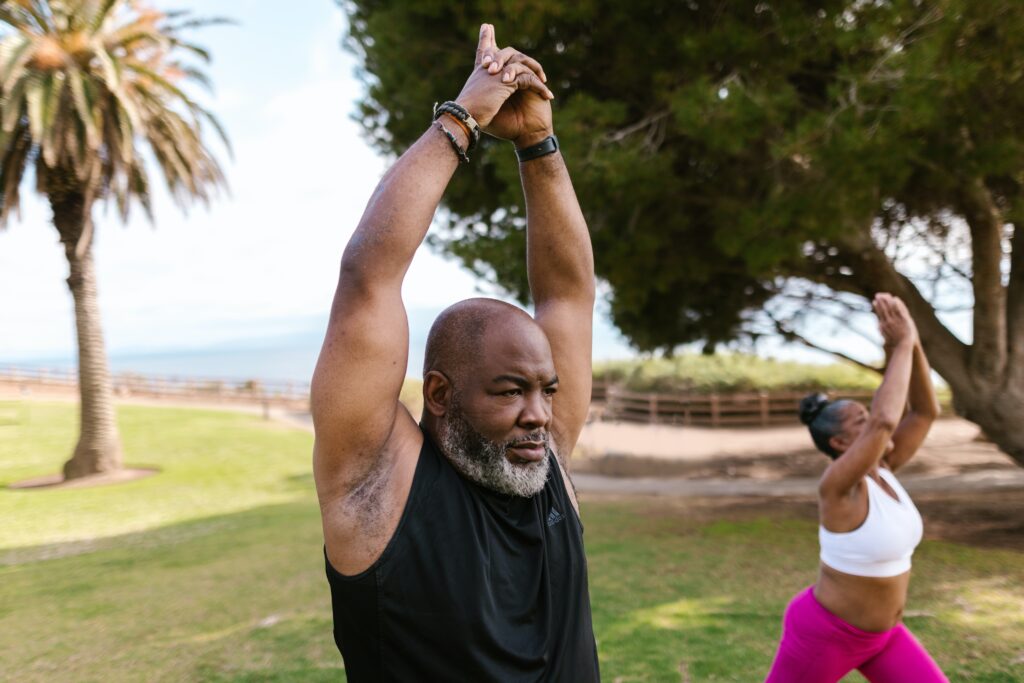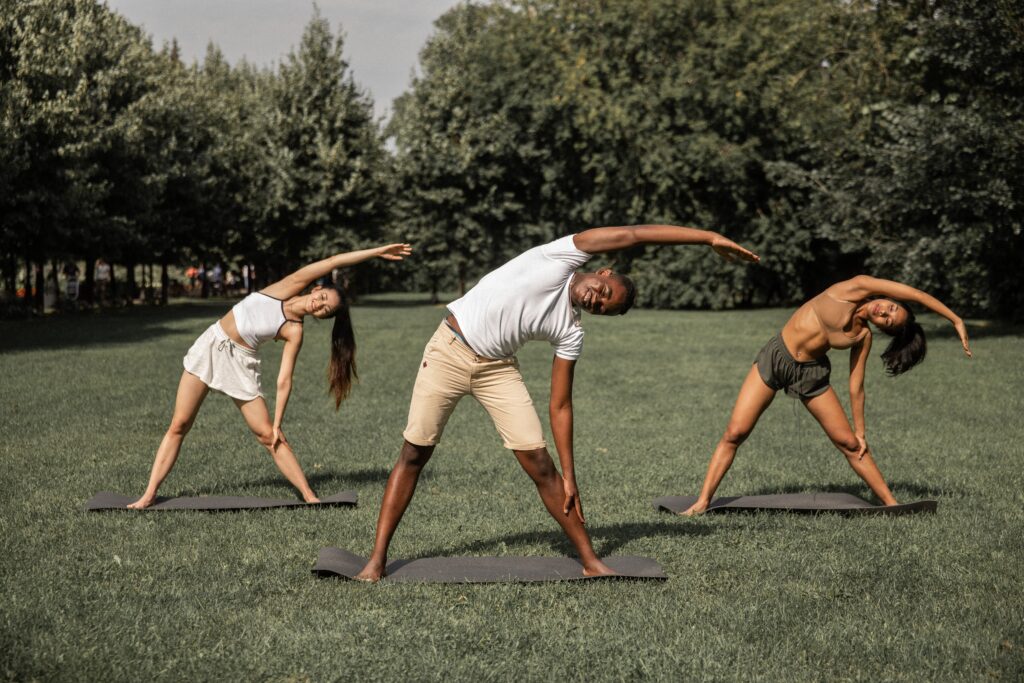History of Yoga: From Inception to the Present Day
Origin and Early Evolution of Yoga
Yoga’s origins trace back to over 5,000 years, deeply rooted in ancient India’s spiritual and cultural fabric. Some argue that its history might be much older, hinted at by the yoga-like figures depicted in the prehistoric Indus Valley Civilization’s seals.
The word ‘Yoga’ stems from the Sanskrit root ‘Yuj,’ which means ‘to unite or join.’ It embodies the union of body, mind, and spirit, aiming to reach a state of perfect tranquility and spiritual insight. Early yoga was primarily a meditative and spiritual practice, significantly different from the physical postures associated with yoga today.
College paper writing services USA are known for their expertise in assisting students with their academic needs. When it comes to college paper writing services USA, students often turn to them for help in crafting well-researched and well-structured papers.






The Philosophy and Sacred Texts of Yoga
The philosophical foundations of yoga are delineated in several sacred texts. The Rig Veda, one of the oldest texts, mentioned yogic meditation practices conducted by Vedic priests. The Upanishads furthered these ideas, introducing the concept of transcending the physical self to attain spiritual liberation.
However, it was in the Bhagavad Gita and the Yoga Sutras of Patanjali that yoga’s philosophy found comprehensive expression. The Gita outlines the paths of Karma Yoga (yoga of action), Bhakti Yoga (yoga of devotion), and Jnana Yoga (yoga of knowledge).
The Yoga Sutras of Patanjali, a seminal text, details the ‘Eight Limbs of Yoga,’ providing guidance for moral, ethical living and mastery over the mind and body. It introduces the concept of ‘Ashtanga Yoga,’ a systematic pathway to achieving the ultimate goal of yoga – Samadhi or enlightenment. Admission essay writing services in USA can help you.
Healthe
good mood
enjoy
History of Yoga: The Historical Trek of Yoga to Western Shores
The historical sojourn of yoga into Western societies began in earnest during the late 19th and early 20th centuries, a notable event being the spirited speech of Swami Vivekananda at the World’s Parliament of Religions held in Chicago in 1893. His eloquent presentation of yoga and Vedanta philosophies stirred an intrigue for Indian spiritual traditions among the Western audience.
Subsequently, the allure of yoga as a physical discipline spiked during the mid-20th century. This was primarily due to eminent yoga gurus such as T. Krishnamacharya, B.K.S Iyengar, and K. Pattabhi Jois, who journeyed to the West and held enlightening yoga sessions and demonstrations. The Western world welcomed yoga with open arms, incorporating it into their fitness and wellness spheres. However, this adoption leaned heavily towards the physical facets of yoga, somewhat overshadowing its profound spiritual essence. You can write essay on this topic or do my homework with best authors.
A Panorama of Yoga Styles and Types
In today’s globalized world, a plethora of yoga styles find resonance across different cultures, each being a unique evolution of the classical yoga forms tailored to suit modern requirements.
A recent ChatGPT review highlighted its ability to generate human-like text, revolutionizing the way we interact with machines. It’s not just a tool, it’s a glimpse into a future where AI assists in daily tasks, making life more efficient and connected. The implications of such technology are vast, stretching from education to creative writing, offering endless possibilities.
Vinyasa Yoga
Vinyasa Yoga, often referred to as ‘flow yoga,’ is characterized by the fluid transition between postures, akin to a choreographed dance. Each movement is typically synchronized with the breath, creating a vigorous, dynamic practice that builds strength and flexibility.
Iyengar Yoga
Iyengar Yoga, a yoga style named after its founder, B.K.S. Iyengar, is renowned for its meticulous attention to detail and alignment in postures. It widely employs the use of props, such as blocks, belts, and bolsters, enabling practitioners of all levels and conditions to access the benefits of yoga poses. This approach prioritizes safety, making it particularly suitable for those with injuries or chronic conditions.
Kundalini Yoga
Kundalini Yoga, often dubbed the ‘yoga of awareness,’ is a comprehensive practice that merges physical postures, breathwork, mantra chanting, and meditation. It aims to awaken the dormant Kundalini energy at the base of the spine, leading to an experience of higher consciousness. Its unique blend of spiritual and physical practices can foster enhanced self-awareness and a deep sense of inner peace.
Bikram Yoga
Bikram Yoga, a style gaining global popularity, consists of a series of 26 postures performed in a heated room. This vigorous practice, designed by Bikram Choudhury, aims to boost flexibility, strength, and balance while promoting detoxification through sweating.
Hatha Yoga
Hatha Yoga is often regarded as the cornerstone of many contemporary yoga styles. This tradition places substantial emphasis on asanas (physical postures) and pranayama (breath control), forming a bridge between the mind and body. Its slower pace and focus on basic postures make it an excellent choice for beginners.
Ashtanga Yoga
Ashtanga Yoga, introduced to the Western world by K. Pattabhi Jois, is a highly disciplined, dynamic style of yoga. It follows a set sequence of postures synchronized with specific breathing patterns. The continuity of movement with breath leads to internal heat and a purifying sweat, detoxifying muscles and organs.

Benefits of Yoga on Health and Wellness
Scientific research now substantiates what ancient yogis intuitively understood – the holistic health benefits of yoga. Regular practice can improve flexibility, strength, balance, and posture. It can also enhance heart health, lower blood pressure, and improve respiratory function.
Beyond physical benefits, yoga’s positive impacts on mental health are well recognized. It can reduce stress, anxiety, and depressive symptoms, promote relaxation, improve sleep quality, and boost overall well-being. Yoga is now often integrated into healthcare for chronic disease management and preventive health.
Influential Yoga Institutions and Their Pioneering Contributions
Several yoga institutions have made landmark contributions to the development and global spread of yoga, profoundly shaping its contemporary practice.
The Ashtanga Yoga Research Institute
The Ashtanga Yoga Research Institute, under the guidance of its founder, K. Pattabhi Jois, has been a leading force in promulgating the Ashtanga Vinyasa style of yoga. This institute set a precedent in marrying physical vigor with spiritual depth, presenting a transformative practice for modern yogis.
The Iyengar Yoga Institute
The Iyengar Yoga Institute, set up by B.K.S. Iyengar, championed the cause of precise alignment in yoga postures, hence making yoga accessible to individuals of diverse physical abilities. The introduction and popularization of props in yoga, which this institute pioneered, have since become a hallmark of therapeutic yoga practices.
The Bihar School of Yoga
The Bihar School of Yoga, a visionary institution led by Swami Satyananda Saraswati, succeeded in marrying age-old yogic practices with modern scientific wisdom. This innovative approach has paved the way for yoga’s recognition as a scientifically valid health and wellness discipline.
The Sivananda Yoga Vedanta Centers
The Sivananda Yoga Vedanta Centers, established by Swami Vishnudevananda, hold a holistic philosophy at their core, encompassing not just physical postures but also proper breathing, relaxation techniques, diet, positive thinking, and meditation. Their teachings emphasize the entirety of human experience, promoting comprehensive wellness.
Famous Yogis and Their Impact on Yoga Practice
Several yogis have left an indelible imprint on the global yoga landscape. T. Krishnamacharya, often called the ‘father of modern yoga,’ significantly influenced his students – B.K.S. Iyengar, K. Pattabhi Jois, and Indra Devi – who each established their unique yoga styles.
Swami Sivananda’s teachings on holistic health inspired a global network of yoga centers. Paramahansa Yogananda, author of ‘Autobiography of a Yogi,’ introduced the West to Kriya Yoga. Swami Rama, founder of the Himalayan Institute, integrated yoga and science, significantly contributing to yoga’s acceptance as a therapeutic discipline.
Yoga Today: Trends and Future Perspectives
Yoga continues to evolve and adapt to contemporary needs and trends. Digital technology has democratized access to yoga, with online classes, tutorials, and apps making it accessible to everyone. Hybrid yoga styles, blending traditional yoga with other fitness regimes, are emerging.
More emphasis is now placed on yoga’s mental health benefits, with practices like mindfulness and restorative yoga gaining popularity. There is a rekindled interest in yoga’s philosophical and spiritual aspects, with people seeking deeper meaning and connection.
As we move into the future, yoga will likely continue to flourish and adapt, cementing its place in the global wellness landscape. From its ancient roots to its modern iterations, yoga’s journey attests to its timeless wisdom and universal appeal. Embracing yoga can lead us towards holistic well-being, harmony, and a deeper understanding of our intrinsic connection to the universe.